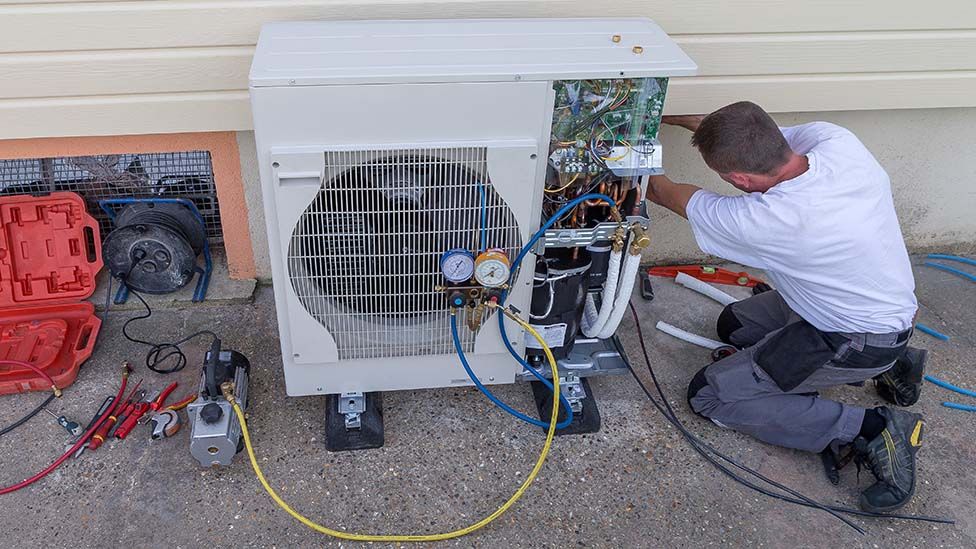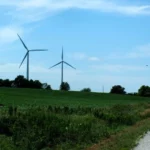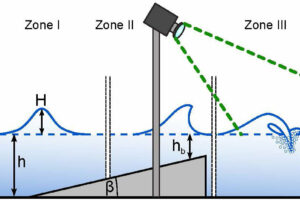The UK risks falling behind in its efforts to reach “net zero” by 2050 without much faster action, according to the government’s independent climate advisers.
The 2050 target is a key part of the UK’s international commitments, which are designed to avoid the worst impacts of climate change.
What does ‘net zero’ mean?
Net zero means no longer adding to the total amount of greenhouse gases in the atmosphere.
Greenhouse gases include carbon dioxide (CO2) and methane. CO2 is released when oil, gas and coal are burned in homes, factories and to power transport. Methane is produced through farming and landfill.
These gases increase global temperatures by trapping the sun’s energy.
Meanwhile, rapid deforestation across the world means there are fewer trees to absorb CO2.
Under the 2015 Paris climate agreement, 197 countries agreed to try to limit global temperature rises to 1.5C by 2100.
To achieve this, scientists said that net zero CO2 emissions should be reached by 2050.
However, the UN now wants countries to bring forward their net zero targets by a decade to avoid what it called “the growing climate disaster”.
Would net zero mean a complete end to greenhouse gas emissions?
Not all emissions can be reduced to zero, so those that remain need to be matched by actively removing greenhouse gases from the atmosphere. This is known as “offsetting”.
Natural offsetting methods include planting trees and restoring peatlands.
One industrial method is carbon capture and storage which involves using machinery to remove CO2 from the air and store it, often deep underground. However, the technology is still emerging and remains expensive.
Although offsetting is important, it can only cancel out a small fraction of current greenhouse gas emissions.
So scientists say drastic cuts to fossil fuel use are essential to meet the net zero goal.

What has the UK pledged to do?
To help reach net zero by 2050, the UK has made a series of ambitious pledges including:
- generating all electricity from clean sources by 2035, including wind, solar and nuclear projects
- banning new petrol and diesel cars from 2030
- installing 600,000 heat pumps a year by 2028 to replace gas boilers
- using carbon capture to remove between 20 and 30 million tonnes of CO2 a year by 2030
The government released an updated net zero strategy in March, but many climate experts criticised the announcement for lacking significant new policies or extra investment.
The UK needs to reduce its emissions by 68% by 2030 compared with 1990 levels, in line with the Paris Agreement – a key step towards net zero by 2050.
But despite the new strategy, the government’s independent climate advisers now say they are “markedly” less confident than a year ago that the UK will meet the 2050 target.
![Graph showing the current projected future greenhouse gas emissions are some way short of the target path. Greenhouse gas emissions have been falling since 1990. [June 2023]](https://ichef.bbci.co.uk/news/1024/cpsprodpb/B8DF/production/_129972374_emissions_tracker_2022_updated-nc.png)
What will net zero mean for individuals?
While the most significant changes need to come from government, individuals will also have to play their part to help reach net zero.
This could include:
- taking fewer flights
- reducing energy use
- improving home insulation and energy efficiency
- switching to electric vehicles
- replacing gas central heating with electric systems such as heat pumps
- eating less red meat

What have other countries promised?
Around 140 countries have pledged to reach net zero, covering about 90% of global emissions. However, not all have set a 2050 deadline.
China – currently the biggest producer of CO2 worldwide – aims for “carbon neutrality” by 2060. Its plans to cut emissions aren’t fully developed, but its renewable energy sector has been growing rapidly.
The US has historically been the biggest carbon emitter, and still emits more than China per head. It has pledged to reach net zero by 2050. In August 2022, it announced a major green investment package called the Inflation Reduction Act, which aims to boost renewables and other clean technologies.
The EU, the third biggest emitter of CO2, also has a 2050 net zero target. In March it announced its own green investment package, called the Net Zero Industry Act.
India and Russia are also key emitters. They have pledged to reach net zero by 2070 and 2060 respectively, but have published few policies to back this up.
What is the problem with net zero targets?
There’s controversy about how some countries might try to reach net zero.
For instance, a country might record lower emissions if it imported energy-intensive goods from overseas, rather than producing the goods itself.
But in reality, it wouldn’t have reduced the total amount of greenhouse gases going into the atmosphere.
There are also schemes that enable rich countries to offset their emissions by paying poorer countries to switch to cleaner fuels.
But some climate scientists worry this could let wealthier nations avoid reducing their fossil fuel usage, by taking advantage of a switch to cleaner fuels in poorer countries which may have happened anyway.
Source : BBC











Add Comment